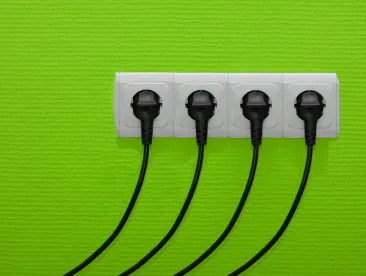In the first quarter of 2017, more than 100 stakeholders, including utilities, technology providers, system operators, and state regulators submitted comments on the extensive notice of proposed rulemaking (NOPR) initiated by the Federal Energy Regulatory Commission (FERC) to encourage deployment of energy storage and aggregated distributed energy resources. While there has been no further official action at FERC (perhaps due to a lack of quorum from February 4 to August 9, 2017 and the need for a new commission to reassess priorities), an increasing number of states and utilities continue to advance investments in energy storage technologies:
-
In mid-October, the Washington Utilities and Transportation Commission issued a policy statement directing utilities to consider energy storage in their resource planning and procurement activities. While the statement does not go as far as setting a procurement mandate, it establishes an expectation that utilities will, among other things, model the sub-hourly benefits of a range of different storage technologies and include a storage alternative in their analysis of resource options.
-
Also last month, the Massachusetts Department of Public Utilities launched an investigation of the eligibility of energy storage systems for net metering and the role of net-metered resources in forward capacity markets.
A recent Smart Electric Power Alliance report on US energy storage deployments underscores that energy storage will continue to expand even though the timing and scope of federal regulation remains unknown. According to the report, utilities interconnected more than 200 megawatts (MW) of energy storage to the grid in 2016, bringing the total energy storage in operation nationwide to 622 MW across 2,399 systems. Even more staggering, GTM Research currently forecasts an elevenfold growth in the size of the 2016 market to 2.5 gigawatts (GW) by 2022.
California has traditionally led among states with early adoption of an incentive program and aggressive energy storage procurement mandates for electric utilities totaling 1.3 GW by 2020. At the end of 2016, California enacted new legislation requiring its three major electric utilities to propose programs and investments for up to an aggregate 500 MW of distributed energy storage systems, above and beyond the 1.3 GW target for energy storage generally, and authorizing the California Public Utilities Commission (CPUC) to double collections from utility customers for energy storage and renewable generation incentives. In response, in April 2017, the CPUC increased the Self-Generation Incentive Program (SGIP) funding from $83 million to $166 million and revised the 75%/25% allocation between energy storage and renewables to 85%/15%. The first tranche of the 2017 SGIP energy storage budget totaling roughly $50 million opened on May 1, 2017 and was fully subscribed within two weeks.
New mandates requiring utilities to procure energy storage are emerging in other states. For example, legislation that would establish an initial statewide deployment target of 1,766 MW of energy storage to be achieved by January 1, 2025 is currently in conference committee in Massachusetts. This initiative follows the Massachusetts Department of Energy Resources’ “aspirational” target of 200 MWh by January 1, 2020 established in conjunction with the current administration’s $10 million energy storage initiative. Nevada and New York also passed new laws in 2017 directing state regulators to establish energy storage targets.
State action is robust, and state regulatory authorities are routinely emerging as thought leaders in energy storage initiatives. As a result of these initiatives, storage developments continue and electric utilities pursue storage resource procurements. Such procurements raise a host of issues and considerations with which electric utilities must grapple, and those issues could be addressed (in part, at least) through federal action that is uniformly applicable. Nevertheless, FERC action in energy storage remains largely absent.
To be sure, the NOPR is not the only storage-related initiative that FERC has undertaken. For example, FERC’s policy statement on cost recovery for storage resources, issued in January 2017, clarified that storage resources may provide transmission grid support services at a cost-based rate while participating in organized markets and earning market-based revenues. That policy statement, however, is not precedential and requires implementation on a case-by-case basis.
While FERC continues its investigation of the NOPR, state mandates and incentives will likely unfold ahead of federal rules moving toward a more organized market for energy storage. This will present challenges in trying to capture the growing technological capabilities and value of energy storage without certainty that those resources are able to fully participate in wholesale markets alongside generation. As a result, we expect stakeholders and state regulators to continue to explore new frameworks to monetize the services that energy storage provides and help with project funding.




 />i
/>i
